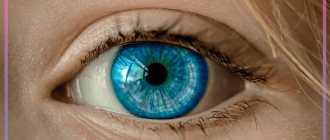Sign language is one of the forms of self-expression, without the use of words and speech symbols. This language was discussed in detail by the Austrian writer Alan Pease, in his work entitled “Body Language”. According to the writer, only seven percent of all information received is perceived by a person using words. The remaining ninety-three percent is perceived by a person thanks to non-verbal signals. Let's look at what nonverbal communication, facial expressions, gestures, movements, postures are and their meaning.
Our body language, compared to other verbal (speech) means of communication, is unique
Seconds to create a first impression
The psychology of nonverbal communication is too multifaceted to cover it all. Let's consider how to learn about a person's character from a first impression. Psychologists say that in the first 10 seconds of communication, an impression of the interlocutor is already created. A person can say one thing with words, but facial expressions, intonation, and gestures can tell something completely different.
A person controls words, but gestures are difficult to control. The body can't lie! Therefore, in order to find out the truth about your interlocutor, you need to learn to understand his gestures.
An individual may completely forget to monitor gestures and facial expressions when his emotional mood increases. Therefore, psychologists try to ask awkward questions in order to confuse the subject.
Gait
“And I recognize a sweetheart by his gait” - this line from a famous song emphasizes that gait is individual. It is very difficult to change, as is your character. Therefore, by studying gait, one can draw quite a lot of conclusions about the personal characteristics of its owner.
When assessing how a person moves in space, you need to pay attention to:
- rhythm of movements;
- walking speed;
- step length;
- “strength” of gait – the force of pressure when walking;
- hand and foot coordination;
- head and shoulder position.
A person with a long stride, as a rule, belongs to an active personality type, is open to communication, and aims to achieve a goal.
Mincing with short steps, he is hardly an open person; rather, he is cautious, inclined to control the situation and not rush into active actions.
Now let’s imagine two people: one rhythmically and briskly striding along the road, and the second slowly trudges towards him. The first is clearly aimed at solving a problem, he has a specific interest in something and, most likely, he is in a good mood. The second is depressed, perhaps tired, and he has no obvious interest in what is happening. If such types of gait are always inherent in a person, then this speaks of character, but if this is a temporary phenomenon, then we can talk about the manifestation of a psychological state that has developed at a given moment in time.
During dialogue, special attention should be paid to the position of the hands
- The first thing you always want to know is whether you are being deceived or not. Touching your face will tell you this. If your opponent constantly touches his face, neck, ears, most likely he is telling a lie, simply deceiving you.
- A lie can be revealed by movements when you involuntarily cover your mouth with your hand. When lying, the interlocutor gets nervous, so it’s as if he’s trying to hold back untruthful words with his hand. This habit comes from childhood, when a child who has told a lie covers his mouth with his palm.
- Hand movements near the mouth most likely demonstrate that the interlocutor lacks support or approval.
- A calm posture, with the chin slightly raised, indicates the person’s confidence in his words. He's not lying, you can be sure of that.
- Hands clasped in front of your body indicate that you are not trusted. In this case, a person can cover himself with a folder, a stack of papers, or cross his arms. Crossed arms are the first sign that you are not trusted. It is important to understand what caused it, why the interlocutor does not want to open up. If you are to blame, then “dig” into your behavior.
- If a person opens his palms when meeting, then he is open to communication.
- An aggressive mood can be indicated by hands placed in pockets, while the thumbs remain outside.
- People who clasp their hands behind their backs show their superiority over others. Their ego "flies" too high.
- When the interlocutor is upset about something and tries to pull himself together, he will start scratching the tip of his nose.
Expand your perception
Knowing the types of nonverbal communication and understanding nonverbal cues is important for several reasons. Firstly, they perform the function of accurately expressing feelings, because very often we experience feelings so complex that we are simply unable to find the right words to describe them, but this can be done using non-verbal means and methods. Secondly, they perform the functions of deeper mutual understanding.
Knowing the basic methods of nonverbal communication, you will be able to better understand and “see through” another person when he is trying to control his behavior when communicating with you, because nonverbal signals manifest themselves unconsciously and your interlocutor simply cannot control them. The classification of nonverbal means of communication and examples of their use will help you not only understand yourself better, but also teach you to recognize lies and manipulation from other people.
To learn to better understand your interlocutor and recognize his hidden signals, you must first learn to pay attention simultaneously to all elements or means of nonverbal communication, and nonverbal means of communication include facial expressions, gestures, postures, intonation and timbre of voice, visual contact and interpersonal space.
Let's talk in more detail about each of these elements of nonverbal communication and give specific examples of their manifestation.
Facial expressions
Facial expressions are the expression of a person’s face; they are the main element of displaying emotions and feelings. Positive emotions, such as love or surprise, are much easier to recognize than negative emotions, which include disgust or anger. Emotions are reflected differently on the right and left sides of the face, because the left and right hemispheres of the brain perform different functions: the right one controls the emotional sphere, and the left one is responsible for intellectual functions.
Emotions are expressed in facial expressions in this way:
- Anger - wide open eyes, drooping corners of the lips, “squinted” gaze, clenched teeth;
- Surprise - a slightly open mouth, wide open eyes and raised eyebrows, lowered tips of the lips;
- Fear - knitted eyebrows, stretched lips with downturned and downturned corners;
- Happiness is a calm look, raised, drawn back corners of the lips;
- Sadness - a “faded” look, drooping corners of the lips, knitted eyebrows.
Eye contact
This method of nonverbal communication helps to demonstrate interest in the conversation and better understand the meaning of what is being said. During a conversation, two people work together to create and regulate the degree of comfort by periodically meeting their gaze and looking away. Staring can either build trust or create discomfort.
Pleasant, general topics maintain eye contact, while negative, confusing questions cause you to look away, demonstrating disagreement and hostility. Features of visual contact allow us to draw conclusions about the degree of interest in the dialogue and attitude towards the interlocutor:
- Admiration – long eye contact, calm gaze;
- Indignation - a fixed, intrusive, somewhat alarming gaze, prolonged eye contact without pauses;
- Position – attentive gaze, eye contact with pauses every 10 seconds;
- Dislike – avoiding eye contact, “rolling” the eyes.
- Waiting - a sharp look into the eyes, raised eyebrows.
With visual contact, you can find out not only the attitude of the interlocutor, but also determine some character traits by eye color.
Intonation and timbre of voice
Correctly understanding the intonation and timbre of a voice means learning to “read between the lines” of another person’s message. Such features include frequent pauses, unfinished sentences and their construction, strength and pitch of the voice, as well as speed of speech.
- Excitement – low tone of voice, fast, choppy speech;
- Enthusiasm – high tone of voice, clear, confident speech;
- Fatigue – low tone of voice, lowering of intonation towards the end of a sentence;
- Arrogance – slow speech, smooth monotonous intonation;
- Uncertainty - mistakes in words, frequent pauses, nervous cough.
How to find out about a person's location
When communicating, you should carefully look at the position of your opponent’s body. When communicating with someone around you, you always want to find mutual understanding. How to catch: is it there or not? During harmonious communication, the partners’ postures are very similar. From time to time, both repeat each other's gestures.
How to spot opposition? It manifests itself in pushing one shoulder forward. An obvious confrontation is clenching your fists and putting your feet forward. When demonstrating non-acceptance of your arguments, the interlocutor puts his hands on his sides.
How does a person express disagreement?
How do you know if a person is ready or not ready to have a conversation?
If you see that a person is leaning slightly in your direction, it means he wants to speak. The cross-leg position will “express” disagreement with your arguments. Expect to enter into an argument if you are not convinced that you are right. Try to open your palms, you will immediately notice how your interlocutor softens.
Disagreement can also be expressed by the following gestures:
- Hands are clasped.
- Arms crossed on chest.
- Withdrawal from communication shows a backward deviation of the back.
- Crossed legs at the ankles is a call to stop communication.
If the legs are straight, relaxed, and the torso is turned towards the partner, then the opponent is completely ready to conduct a conversation.
What poses will reveal hidden thoughts?
To “read” hidden thoughts in your partner’s behavior, you can resort to some tricks.
The most effective trick is to get into his personal space. Changing the distance is used by executives, investigators, and police officers. At the same time, the person gets lost, then begins to express what he would not like to say. An individual who is convinced that he is right will never flinch from such an action. The liar will begin to touch his neck, ears, close his mouth, blush, and turn pale.
Readiness for action is demonstrated by placing your hands on your hips. This gesture shows that the person intends to go towards his goal.
A person's appearance is very important. An unbuttoned jacket or jacket shows the friendliness of the partner. If he is buttoned up, has his hands in his pockets or crosses them over his chest, then he is not ready to make a deal or sign an agreement. So that your partner is not “afraid” of you, you should show your palms. Then the conversation will flow in a different direction and an agreement will be concluded.
A partner who sits but has his legs out shows his openness. If your opponent is bored listening to you, he begins to draw abstract figures on a piece of paper. He can stand up, supposedly behind a book or pen. Turning your face to the side is a demonstration of disinterest in the conversation. You will see your hands tightly clasped - this is a gesture of suspicion and mistrust.
How to recognize a dominant person
Often a person begins to show his superiority. Why did it happen? He asserts himself or is arrogant or shows his power.
How to recognize such a person:
- At the first handshake. He grabs the other person's hand so that his hand is on top.
- Feet on the table or on the armrest of a chair.
- Hands joined behind the head.
- Half-closed eyelids.
- Hands in pockets with thumbs out.
- Sits higher than others or stands so that the interlocutor looks into his face from below.
- The pose of senior managers is with hands behind the back, chin looking up.
A rare but interesting position for a person - hands under the armpits, and the torso slightly tilted back. This is how the individual demonstrates confidence in his actions.
Facial expressions when communicating, what should not be demonstrated
Facial expressions play one of the central roles in communication. First of all, when meeting someone, they look at the face, at the emotions that are displayed there. It’s not for nothing that the science called physiognomy has become so popular. The following facial expressions are undesirable:
- Frown eyebrows - mistrust, aggression and anger;
- Raised eyebrows – surprise coupled with reluctance to communicate;
- Yawning is indifference to the interlocutor and his words;
- Grin - an evil coloring of behavior and aggression;
- A wrinkled nose and protruding lips are disgust.
Learning body language and body language is not very difficult, and it gives a huge psychological advantage both in simple communication and in mutually beneficial negotiations. A person who has these skills and understands what his interlocutors are hiding or trying to say can always turn the conversation in a direction beneficial to himself. Having learned to behave correctly, a person will also be able to win over his interlocutor, show him his sincere respect, and establish complex contacts and partnerships.
How your feet tell you what you're thinking
Watch where your feet stand. A knowledgeable person will quickly read your thoughts. Why legs? You can still control your arms, but your legs rise on their own, depending on your intentions.
- Wide-set legs show off the groin. This is how men can stand in front of their chosen one. Experts assure that you can rely on such a man. He stands confidently on the ground. For those around him, this is a signal that he is a ruler and never runs away from difficulties. Hands that rest confidently on the belt buckle help enhance the effect.
- The toe of one foot is turned to the side. The pose indicates where the person wants to go. If you are engrossed in a conversation, and the other person’s toe is looking to the side, then don’t hold on, let him go. There won't be a good conversation anyway!
- If the socks are pointing in your direction , then the person is interested in talking longer.
- If a person is uncomfortable in an unfamiliar company, then he will stand to the side with his legs crossed . Please note that if he also crosses his arms over his chest, then he has completely closed himself off from everyone.
- If a person grabs his leg with his hands , then he does not intend to retreat. He will stand his ground.
- When a person starts “kicking” the air with his foot , he is about to tell you to leave.
- Grasping the leg with both hands shows that the person will not deviate from the intended path.
- Crossed legs, sitting and standing, demonstrate one thing - closedness or severe stress. At this time, no information reaches him.
- If a person crosses his legs at the ankles, and even puts them under a chair , then the person is extremely uncomfortable because he cannot drive you away. Knowing this gesture, you should leave. In this state, the individual will also not be able to perceive information.
Dear friends, the conversation on the topic: “What do human postures mean” is so interesting and useful that it can captivate you. Being able to decipher poses is useful for business partners, managers and just friends, so that they know what to expect from their interlocutor.
Interpersonal space
The distance between interlocutors plays an important role in establishing contact and understanding the communication situation. Often people express their attitude in categories such as “stay away from there” or “I want to be closer to him.” If people are interested in each other, the space separating them decreases, they tend to be closer. To better understand these features, as well as to correctly distinguish between situations and the scope of contact, you should know the basic limits of the permissible distance between interlocutors:
- Intimate distance (up to 0.5 m) – intimate, trusting relationships between close people and friends. May also be acceptable in sports where bodily contact is acceptable.
- Interpersonal distance (from 0.5 m to 1.2 m) is a comfortable distance during a friendly conversation where touching each other is allowed.
- Social distance (from 1.2 m to 3.7 m) – informal interaction in society, during a business meeting. The greater the distance, right up to the extreme border, the more formal the relationship.
- Public distance (more than 3.7 m) is a comfortable distance for a lecturer who makes a public presentation to a large group of people.
Such distance limits and their significance depend on the age, gender of a person, and his personal characteristics. Children are comfortable being at a closer distance from their interlocutor, while teenagers close themselves off and want to distance themselves from others.
Women love closer distances, regardless of the gender of their interlocutor. Balanced, confident people do not pay much attention to distance, while nervous, anxious people try to stay away from others.










